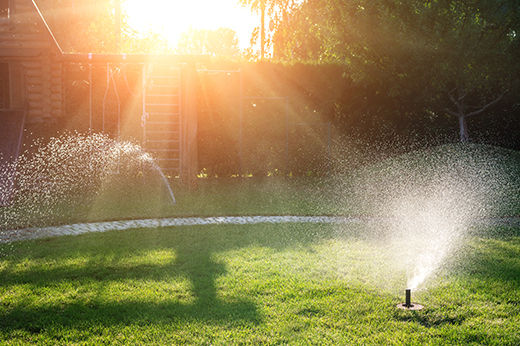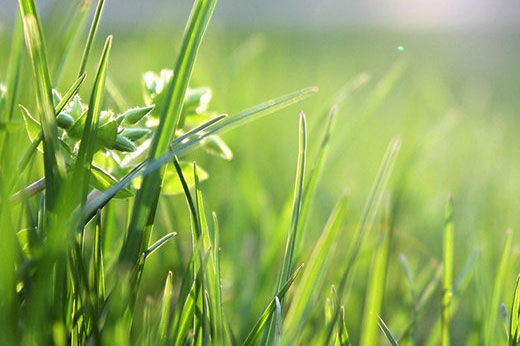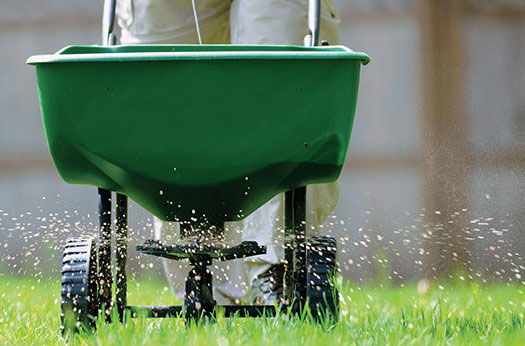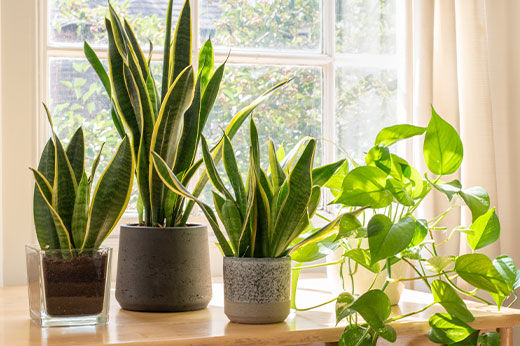While do-it-yourself projects can be fun and fulfilling, there is always a potential for personal injury or property damage. We strongly suggest that any project beyond your abilities be left to licensed professionals such as electricians, plumbers, and carpenters. Any action you take upon the information on this website is strictly at your own risk, and we assume no responsibility or liability for the contents of this article.
Chainsaw Maintenance Tips
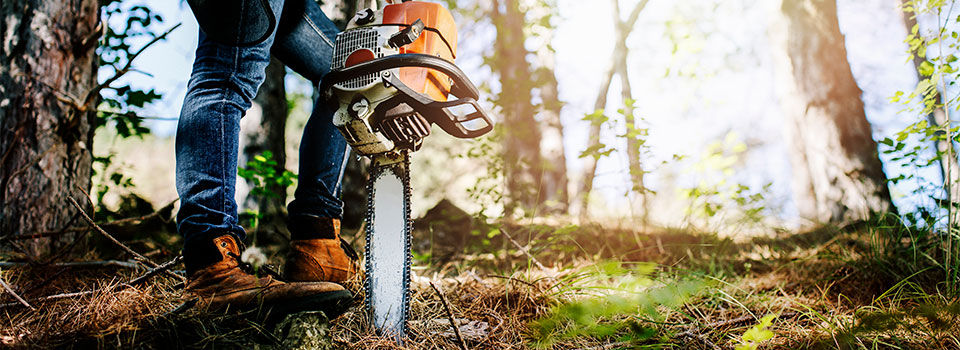
Whether you’re gathering firewood, removing dead trees, cleaning up and trimming branches, or anything else that involves cutting wood, chainsaws help get the job done. When used carefully, a chainsaw can save you time and money on any project. However, when not properly cared for, they can malfunction and potentially cause damage to you and your surroundings. Follow these simple tips for routine maintenance to reduce hazards and make sure your chainsaw is always ready to go.
Before Each Use

It’s not safe to start a chainsaw without first checking and adjusting the tension on the chain. If the chain is too loose, it can come loose when the saw starts and hurt you or damage something. Get the correct amount of tension by holding the tip of the bar with your fingers and pulling it up against the sprocket. Tighten the chain until there is no slack on the underside of the chain but no farther to prevent binding. Check the gas tank and oil reservoir before starting it as well. Trying to start it without enough fuel will just hurt your arm, and starting it without oil could damage the bar and gears. Clean off any sawdust you see around the vents or sprocket that holds the bar on.
After Each Use

If you don’t plan to use the saw in the next 30 days, drain the fuel and dispose of it properly. You can also store it with a fuel stabilizer, but make sure it’s in a separate fuel tank rather than the saw where it can varnish inside important parts. Clean off sawdust with a soft-bristled brush after each use so that it doesn’t get stuck to the bar, chain, or sprocket. Consider sharpening the blade after every third or fourth use so that it’s ready for smooth cutting the next time.
Fueling the Chainsaw
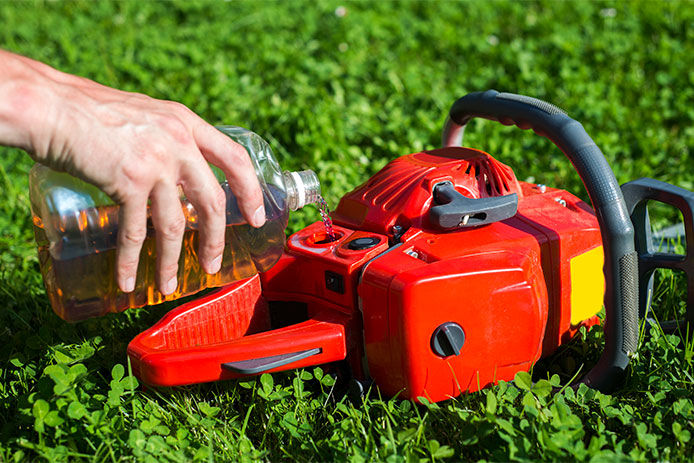
Almost all chainsaws sold today require a blend of oil and gas because they rely on two-stroke engines. Modern saws may only need a 50:1 ratio of gas to oil. So, you’ll only need a tiny bottle of two-stroke engine oil for a few gallons of gas. Use non-ethanol gas in small engines like chainsaws since the ethanol is hard on the parts and leads to incomplete combustion. Mix in premium oil since you won’t have to use much of it. Buy a pre-blended chainsaw fuel product if you don’t like messing around with measurements and mixing. These fuels also tend to be stabilized, so you can keep them on a shelf until you need them.
Maintaining Batteries
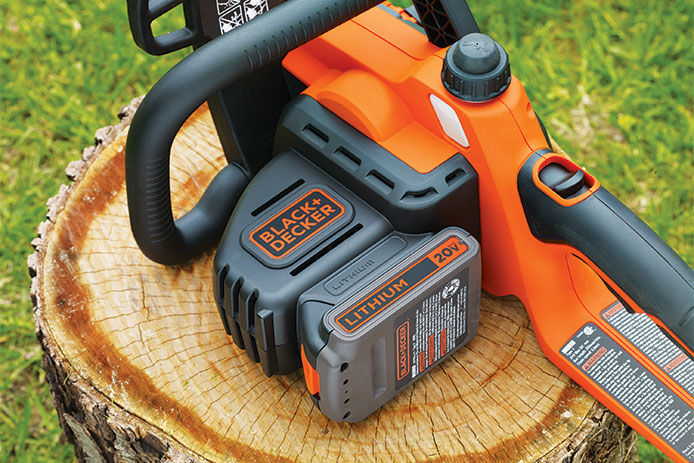
Battery-powered electric chainsaws are valuable for smaller cutting jobs where you don’t want to deal with exhaust. The powerful batteries that power these saws still need maintenance and care on their own. Remove the battery from its charger once it is full and store it in a cool, dry, well-ventilated place out of the saw and sources of heat. Clean the cooling fins before and after each use to avoid overheating and wear on the battery. Add bar oil every time you recharge the battery, and you shouldn’t run out of either power or lubrication.
Sharpening the Blade
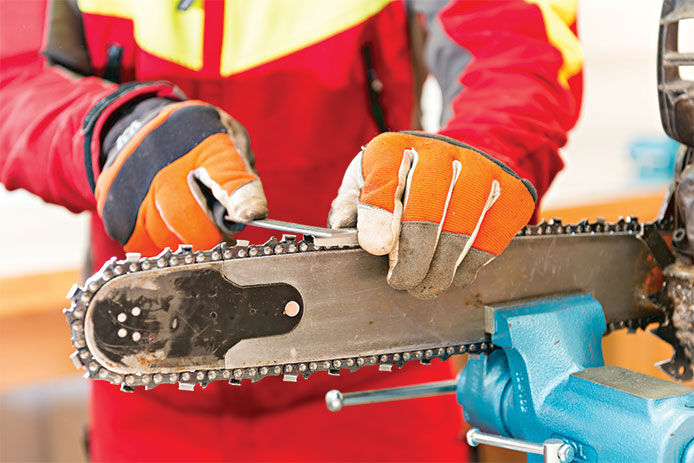
A sharp chainsaw blade is safer, more efficient, and less likely to lead to sore arms and back. A dull blade doesn’t just slow down the cutting process. It’s likely to overheat the saw regardless of whether it’s fuel or battery powered. It’s also dangerous because the saw is more likely to kick back, sending the bar and chain to move rapidly towards you. You can buy files and tools for sharpening the chain yourself, but it’s tricky due to the need to maintain the angle of each tooth. Taking the chain to a sharpening service at the local Do it Best store is likely a better choice unless you’re experienced or cut daily with the saw.
Replacing the Bar and Chain
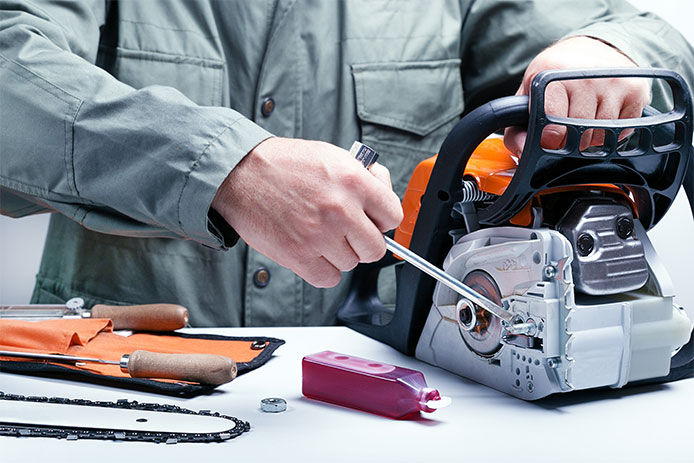
Don’t use a chain that shows signs of wear or becomes stiff and hard to move around the bar with your hand. Also, if the bar begins to curve or no longer displays the brand name painted on it, it’s time to replace it. You can pick up chains alone or combinations of matching bars and chains. You’ll usually replace a chain three times before needing a new bar, saving money over buying both. Using enough bar oil will help both parts last longer before needing replacement.
Chainsaws are the safest when you know how to operate them properly. Brush up on your sawing skills and pick up some cut-resistant chaps to feel more confident before breaking up that fallen tree in the yard.
